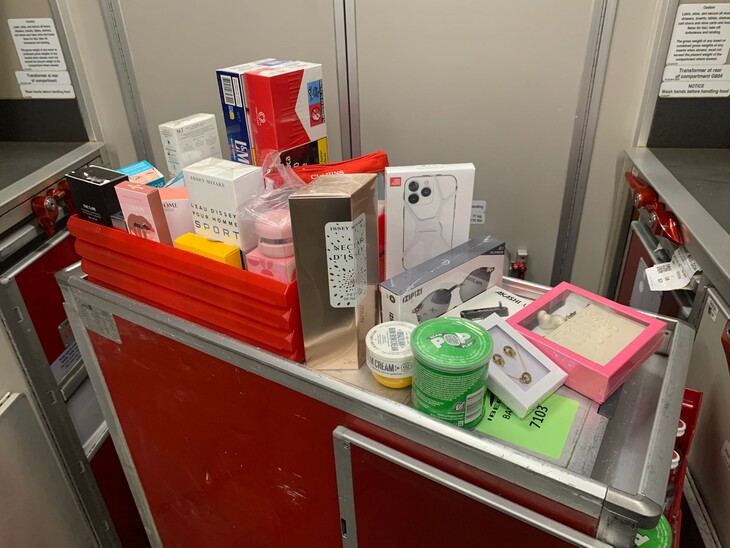INTERNATIONAL. The International Air Transport Association (IATA) has revised upwardly its industry financial outlook for year-end 2012 and for 2013.
For 2012 airlines are expected to return a profit of US$6.7 billion (up from the US$4.1 billion forecast in October). This is expected to improve slightly to US$8.4 billion in 2013 (marginally better than the US$7.5 billion forecast in October). Industry net post-tax margin, however, will remain weak at 1.0% in 2012 and 1.3% in 2013, added IATA.
Improved prospects for 2012 are being driven by strong airline performance in the second and third quarters. Despite high fuel prices and a slowing world economy, airline profits and cash flows held up at levels similar to 2006 when oil prices were about US$45/barrel lower and world economic growth was -4.0%.
Historically, when GDP growth has fallen below +2% the airline industry has returned a collective loss. “With GDP growth close to the “˜stall speed’ of +2.0% and oil at US$109.5/barrel we expected much weaker performance. But airlines have adjusted to this difficult environment through improving efficiency and restructuring. That is protecting cash flows against weak economic growth and high fuel prices,” said Tony Tyler, IATA’s Director General and CEO.
The improved performance is most evident in large airlines for which Earnings Before Interest, Taxes, Depreciation and Amortization (EBITDA) averaged between 10% and 15% of revenue in the third quarter of the year. “It’s a diverging picture. Economies of scale are helping larger airlines to cope much better with the difficult environment than small and medium-sized carriers which continue to struggle,” said Tyler.
Overall performance has been positively affected by strong passenger traffic growth (+5.3%) and a +3.0% improvement in yields. Despite the slowing world economy business travel was supported by more robust international trade in goods and service this year. This contributed to a positive picture for both passenger volumes and yields.
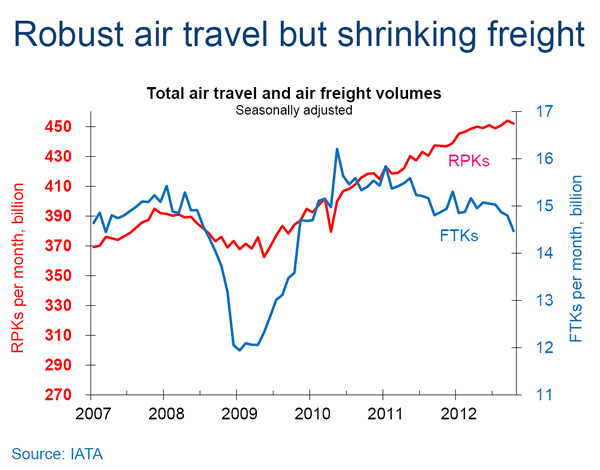 |
In sharp contrast, cargo markets have contracted by -2.0% and cargo yields are down -2.0% on 2011 levels. Although world trade is still expanding, the pattern of economic growth – concentrated in the emerging markets – has favoured ocean over air freight.
IATA emphasised that despite the improved prospects, overall the industry remains weak: it said that the US$6.7 billion expected net profit is a fall from the US$8.8 billion that the industry made in 2011.
The 1.0% net profit margin is well below the 7-8% needed to recover the industry’s cost of capital.
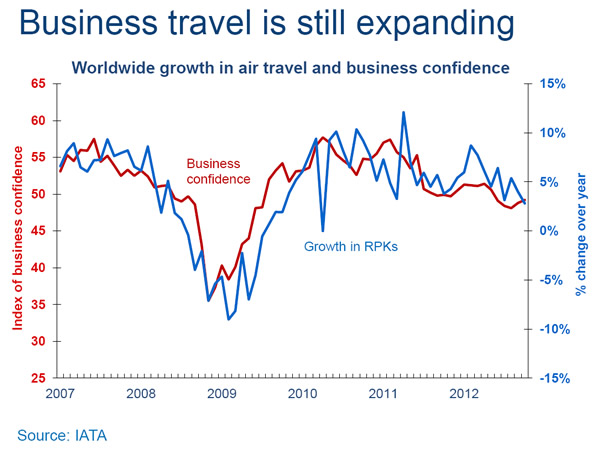 |
IATA said: “Changes to industry structure are contributing to the improved airline financial performance seen since the second quarter. In the difficult business environment of the past year airlines have been seeking to lower costs and improve yields through restructuring. Recent alliances and joint ventures have enabled economies of scale as well as offering more choice for passengers. A sharp fall in the number of new entrants, due to the lack of funding for start-ups, and a number of airline bankruptcies have also contributed to an improved industry structure which has allowed airlines to share efficiency gains between improved service for passengers and better returns for investors.”
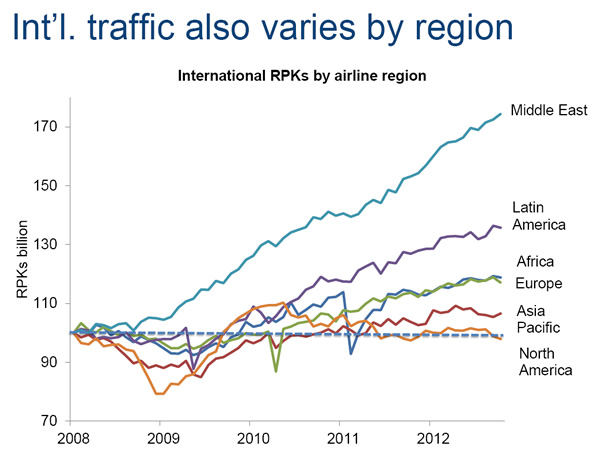 |
Regional performance
North American carriers are expected to end 2012 with a collective net profit of US$2.4 billion. That is stronger than the US$1.7 billion profit of 2011, largely on the back of much improved asset utilisation as a result of recent industry consolidation. The Earnings Before Interest and Taxes (EBIT) margin of 3.4% is the strongest among regions.
European carriers are expected to break even. That is US$400 million worse than 2011 performance, but US$1.2 billion better than the October forecast largely attributable to the results of efficiency programmes and stronger traffic growth which drove improved results in the second and third quarter.
While this is the largest contributor to the upgraded outlook for 2012, the continent’s carriers remain in the weakest financial position. EBIT margins are expected to be 0.6% and with expected breakeven performance Europe stands with Africa as the only two regions not delivering profit.
Asia Pacific carriers are expected to post a net profit of US$3.0 billion (up US$700 million on the October forecast). The region will deliver the largest aggregate profit among the regions while the EBIT margin of 2.9% ranks second behind North America. The region’s carriers will see the largest absolute fall in profits compared to 2011 when Asia-Pacific airlines returned a profit of US$5.4 billion. The region is under pressure from weak cargo markets and slower economic growth in China.
Middle East airlines are expected to post a profit of US$800 million (up US$100 million on the October outlook). That is slightly below the US$1 billion that Middle East carriers made in 2011. While the region is maintaining strong growth with long-haul connection traffic, its performance has been weakened by the Arab spring and lingering instability.
The outlook for Latin American airlines is unchanged at US$400 million. Along with North America, it is the only region to see an improvement on 2011 when the region’s carriers posted a profit of US$300 million. This is partly driven by the region’s more robust trade and economies and partly by the consolidation that has started to reverse the losses seen in Brazil.
African airlines are expected to end the year at breakeven-unchanged from the previous forecast and from 2011. While the continent’s economy is expanding rapidly, its carriers are suffering from strong competition on long-haul routes, high cost structures and a regulatory regime that inhibits the development of intra-Africa links, noted IATA.
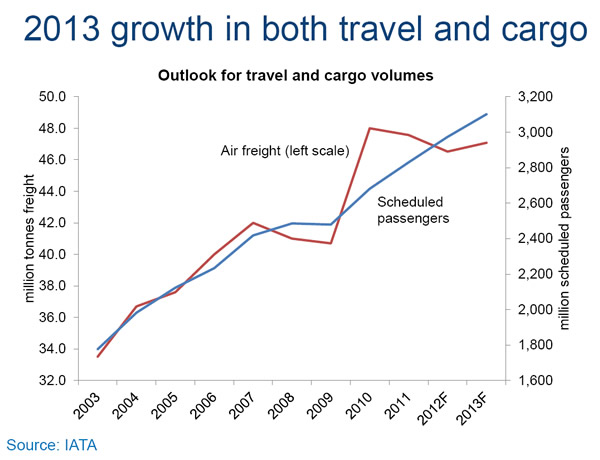 |
Outlook for 2013
“Prospects for 2013 will be largely unchanged from 2012. Net profits are expected to rise to US$8.4 billion leaving the industry with a 1.3% net profit margin. It is good that we are moving in the right direction, but the year ahead is shaping up to be another tough one for the industry,” said Tyler.
Forecast drivers
GDP: The largest driver of industry prospects is global economic growth. This is expected to strengthen only slightly to +2.3% in 2013.
Passengers: Passenger demand in 2013 is expected to grow by +4.5% (below the +5.3% forecast for 2012). Yields are expected to deteriorate by 0.2%, largely in response to lower fuel costs.
Fuel: Oil prices are expected to moderate slightly to US$104/barrel (down US$5.5/barrel from 2012). The premium paid for jet fuel refining, however, will result in a smaller drop in jet fuel prices to US$124.3/barrel (down US$5.2 from 2012).
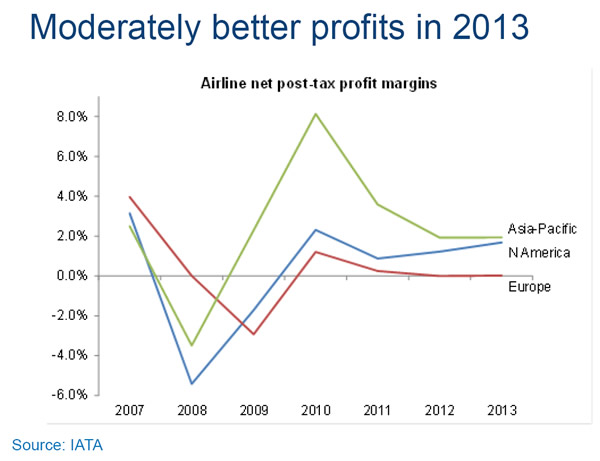 |
Regional performance
North American airlines are expected to post a combined net profit of US$3.4 billion-the largest absolute profit among the regions, and a US$1.0 billion improvement on 2012. The EBIT margin will grow to 3.8% (up from 3.4% in 2012). The US economy is forecast to be the strongest growing among the developed economies and further benefits are expected from earlier consolidation.
European airlines are expected to have a second consecutive year at breakeven. The EBIT margin will also remain unchanged from 2012 at 0.6%. The continuing uncertainty in the European economy, high taxes and inefficient infrastructure continue to affect the industry in Europe.
Asia Pacific airlines are expected to see net profits grow by US$200 million to US$3.2 billion in 2013. While this is the second highest absolute profit among the regions, EBIT margins for Asia Pacific airlines are expects to grow significantly to 4.7% (the strongest among the regions). Economies in this region remain the most dynamic and the deterioration in cargo markets is expected to come to an end in 2013.
Middle East airlines are expected to see profits rise by US$300 million to US$1.1 billion and EBIT margins improve to 3.0%. Airlines in this region are forecast to continue to expand their share of international markets.
Latin American airlines will see net profits rise by US$300 million to US$700 million for an EBIT margin of 3.1%. Strong trade flows and robust growth in this region support revenues and improvements continue from consolidation in Brazil.
African airlines are expected to post a third consecutive year of breakeven performance with an EBIT margin of 0.1%. Economic growth and trade flows are robust but airlines performance remains uneven.
Risks
Macro-economic, geopolitical and policy risks to the outlook remain high and largely negative, said IATA.
“The Eurozone crisis is far from solved,” it noted. “While liquidity is returning to the market there is no economic growth. The US economy is growing, but the threat of the fiscal cliff has not been eliminated. China is expected to pursue accelerated growth, but there is a threat that the banking and real-estate bubbles could burst. Geopolitical difficulties between China and Japan and with Iran are persisting.”
[houseAd5]













